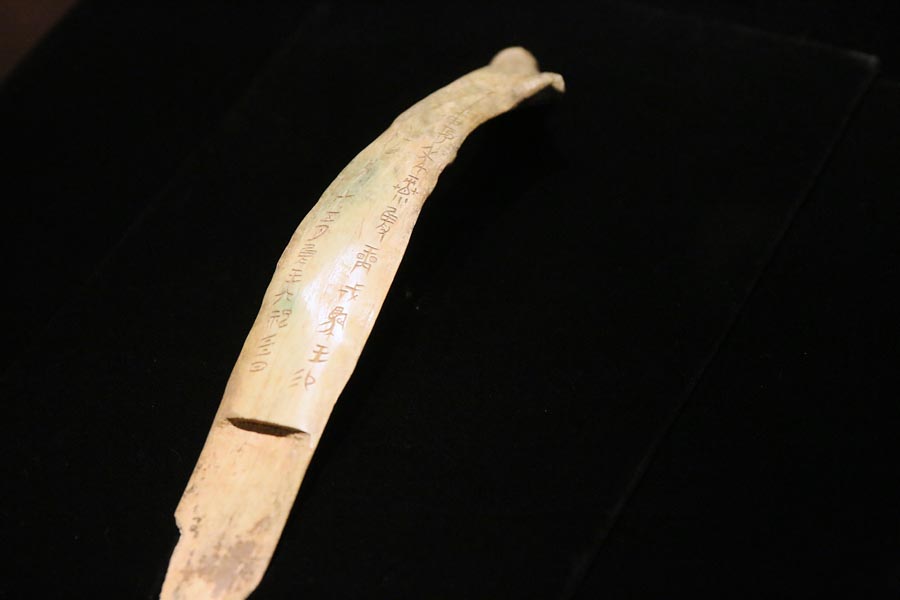 |
|
Another oracle bone from the same era. [PHOTO BY JIANG DONG/CHINA DAILY] |
The practice was gradually replaced by other fortune-telling methods and eventually vanished. It was only brought back to light 120 years ago when the oracle bones were rediscovered and initially mistaken for medical remedies. Interest in them was reignited among historians and scholars, as tens of thousands of inscribed oracle bones were dug up from the Yin Ruins in Anyang, Henan province. Among them was Luo Zhenyu, the late philologist and oracle bone collector, and several objects from his collection are currently on display at the National Museum.
Chen Nan, a professor of Tsinghua University's Academy of Art and Design, has invigorated the life of these archaic symbols by featuring them in the emoticons he develops and the artworks he creates. His works are also being displayed at the exhibition at the National Museum.
"The oracle bone scripts, as an earliest known and mature form of Chinese characters, present the beauty and uniqueness of a language that has been passed down consistently," Chen says.
"And aided by new forms of technology, they have regained vitality.... We should therefore endeavor to rekindle the life of these beautiful ancient scripts, making them grace our lives and carry forward our cultural traditions."
Contact the writer at linqi@chinadaily.com.cn